Timeline
1835 PVC (Plastics)
Today, PVC is used in hundreds of products such as raincoats, electric wires coatings, window frames, floor tiles, paints, water pipes and bottles.
Read more
Henri Victor Regnault, a French chemist and physicist, mainly studied gases and experimented with vinyl chloride gas. Once, he left a sample sitting in the sun. He was surprised to find a white solid at the bottom of the flask. This turned out to be polyvinyl chloride, more commonly known as PVC.
It was not until 80 years later, in 1912, that German chemist Dr. Fritz Klatte developed a new process for producing polyvinyl chloride (PVC) using sunlight. He became the first inventor to receive a patent for PVC, yet he failed to realise the potential it had. He attempted to use PVC in commercial products, but difficulties in processing the rigid, sometimes brittle polymer frustrated his efforts.
No real use for PVC was found until an American inventor, Waldo Semon, discovered a method to plasticise PVC in 1926. He blended it with various additives. The result was a more flexible material that was easy to use in many ways.
The material proved to be perfect for making shower curtains. Also, it’s waterproof, so designers started to use it for many products such as golf balls and shoe heels. Today, PVC is used in hundreds of products such as raincoats, electric wires coatings, window frames, floor tiles, paints, water pipes and bottles.
1839 Polystyrene
It all started in 1839 when Eduard Simon, a pharmacist in Berlin, Germany, discovered polystyrene by accident. Simon tried to distil a natural resin called storax.
Read more
During distillation, he obtained an oily substance that he named “styrol”. Several days later, he found out that the sample had thickened, presumably due to oxidation. Simon didn’t know he had discovered polystyrene.
The German chemist Hermann Staudinger was the first to recognise in 1920 that polystyrene is made up of many styrene molecules joined together in a chain. Building on Staudinger’s observations, in 1929 the scientists at the chemical company BASF developed a way to commercially manufacture polystyrene. A year later the era of large-scale production started. The Dow Chemical Company introduced STYRONTM polystyrene resins in 1938.
Today, polystyrene is used in making many products, whenever colourful and cheap plastic is needed. Solid polystyrene comes in many shapes and forms, from plastic cutlery to CD “jewel” cases. Polystyrene became really popular from 1951, with the invention of polystyrene foam, called Styropore® by BASF. Polystyrene foam is used for insulation, packaging and food containers such as cups, egg cartons, disposable plates and trays.
1856 Synthetic dyes
Before the end of the 19th century, we used natural materials such as bark, berries, seaweed and lichens to dye fabrics.
Read more
Natural dyes were ultimately supplanted by synthetic dyes when William Henry Perkin discovered the first synthetic dye, mauve, in 1856.
18-year old William Perkin, a gifted student of the Royal College of Chemistry in London, was looking for a way to develop an artificial form of quinine from coal tar. Quinine was needed to treat British troops suffering from malaria in India. During his experiments, instead of quinine, young Perkin was left with some purplish powder. More experimentation led him to realise that this substance worked as a textile dye which was colourfast and resistant to light. It was originally called aniline purple, but was renamed mauve (French for the mallow flower) when it reached a peak of popularity.
This colour was propelled in fashion by the choice of mauve gowns by the Queen Victoria and Empress Eugenie (wife of Napoleon III). Around 1860, if you weren’t wearing mauve you were definitely not fashionable! Before Perkin’s discovery huge quantities of shells of a species of Mediterranean mollusc were needed to get a purple colour. Perkin’s mauve therefore allowed the masses to own the latest fashionable colours.
The discovery of mauve really boosted the petrochemical industry. An explosion of young chemists suddenly realised organic chemistry was exciting, profitable and of great use. More than 7.000 synthetic colorants are presently in commercial use, differing in fastness and other properties, and requiring different methods of application. Most of the dyes are used by the textile industry, but the leather, paper, food, and cosmetic industries are also important users. Artificial dyes are also used in modern medicine. They play a crucial role in many aspects of genetic identification. Researchers have also found a revolutionary use for dyes in an important treatment of cancer, in which tumours are stained before being blasted with a high-precision laser.
1879 Synthetic rubber
Natural rubber has been collected in the form of latex for a very long time and rubber balls have been found from as far back as 1600 BC!
Read more
It was also used to make rubber shoes, strips to hold stone and metal tools, water-resistant cloth, and more.
In the 1890s, more people began to use cars and car tyres, which created increased demand for rubber. The first form of synthetic rubber was created in 1879. Large-scale commercial production of synthetic rubber first started in Germany during World War I. Investigations into synthetic rubber continued after the War and this led, in 1933, to the invention by German scientists of a type of synthetic rubber, Buna-S. Buna-S is made up of styrene and butadiene, and mainly used to make tyres for cars.
At the same time, in the USA, investigations focused on different materials. Neoprene was invented in 1931 by DuPont scientists after they attended a lecture by a Belgian-born priest and professor of chemistry, Dr. Julius Nieuwland.
Neoprene was considered superior to rubber in many ways. It is resistant to sunlight, abrasion, and extreme temperatures. One of the most popular uses of neoprene is wetsuits. In wetsuits, neoprene traps water between the wetsuit and the wearer’s skin. Body heat warms the water against the skin, which works to reduce heat loss from the body, so that divers and surfers can swim comfortably in cold water.
The insulating and protective properties of neoprene have made it a popular material in products as diverse as scuba-diving gear to protective gloves, protective covers for items such as mobile phones but also in corrosion-resistant coatings and adhesives.
1925 Bakelite
Setting out to make a substitute to shellac, a resin-like natural substance, the Belgian Leo Hendrik Baekeland invented the world’s first true plastic.
Read more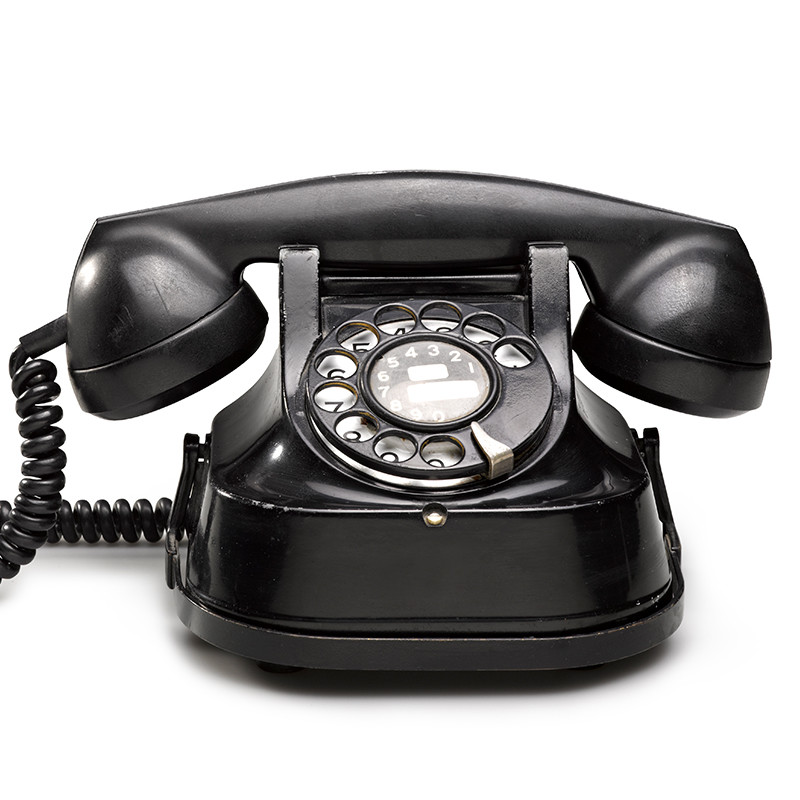
It was later named bakelite after him and it transformed the world. Based on the results achieved with phenol resins by Carl Heinrich Meyer, Baekeland began to investigate the reactions between phenol and formaldehyde, but it is only in 1909 that the discovery of bakelite was formally announced.
Bakelite was the first synthetic plastic to be invented. Bakelite doesn’t melt or go soft, so it was soon found to have many uses, especially in the rapidly growing automobile and radio industries. When bakelite appeared in the radio industry in the 1930s, wooden radios rapidly became obsolete, turning the radio from a luxury object into a product that anyone could afford.
Bakelite is also used for domestic purposes, as electrical insulators for instance, where it proved to be more effective than any other material available – so effective in fact that it is still used as such today. It is resistant to heat and electricity, shatter-proof and does not crack, fade, crease or discolor from exposure to sunlight, humidity or sea salt.
1928 Synthetic fuels
Synthetic fuel, also known as synfuel, is fuel obtained from coal, natural gas or biomass.
Read more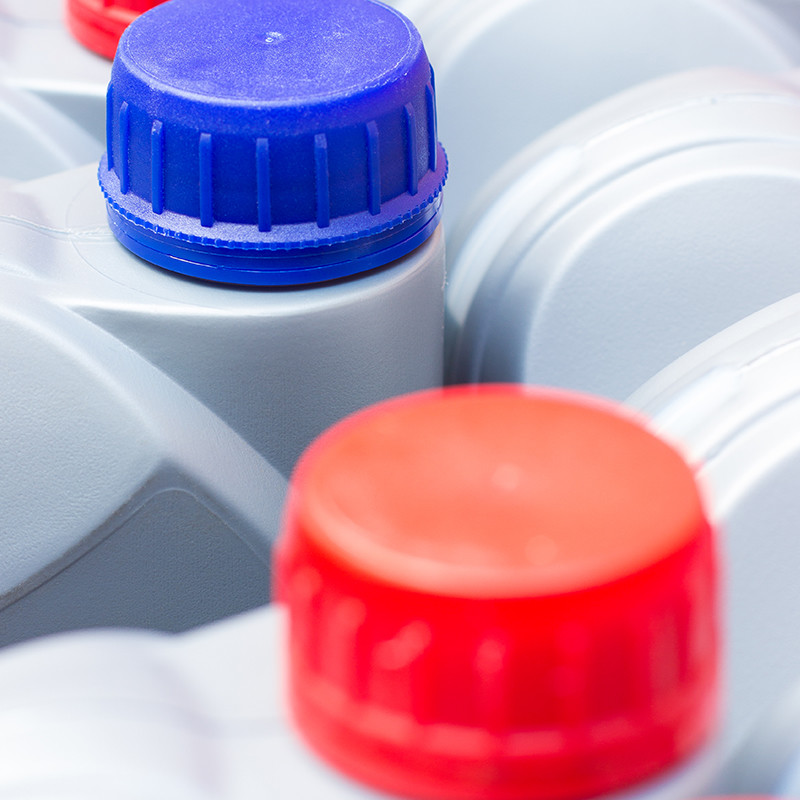
Synthetic fuels are often referred to as Coal-To-Liquids (CTL), Gas-To-Liquids (GTL) or Biomass-To-Liquids (BTL), depending on the material used to produce the fuel.
The quest for alternative fuel to oil is not new. The Fischer-Tropsch process is the most common for converting coal, biomass or natural gas into synthetic fuels. It was developed by the German researchers Franz Fischer and Hans Tropsch in 1925. During World War II, petroleum-poor but coal-rich Germany used this process extensively to produce fuels for planes and tanks. South Africa did the same from 1955, during the embargo under the apartheid regime.
Over the decades, the Fischer-Tropsch process has been continually refined and adjusted, most notably in South Africa and Malaysia. For instance, it is used today by South African Airways in a 50/50 blend of Coal-To-Liquid.
The most environmentally-friendly synthetic fuel is based on the Biomass-To-Liquids technology, i.e. a chemical process that transforms biomass into liquid fuels. Waste plant material like wood chips and straw are used instead of food crops like soybean and rapeseed, which are the main sources of today’s biofuels. This type of fuel has an enormous potential for reducing CO2 emissions. This technology is still very expensive but it is expected to play a huge role over the next twenty years, once it becomes cheaper to produce.
With their roots in the early part of the 20th century, these technologies continue to draw the attention of many countries, in particular those that need to import a lot of oil from overseas. Some of the world’s best engineers, scientists and academics are engaged in research full of promise for the future of the planet.
1930 Plexiglas®
Plexiglas® was discovered by accident in Röhm laboratory in Germany.
Read more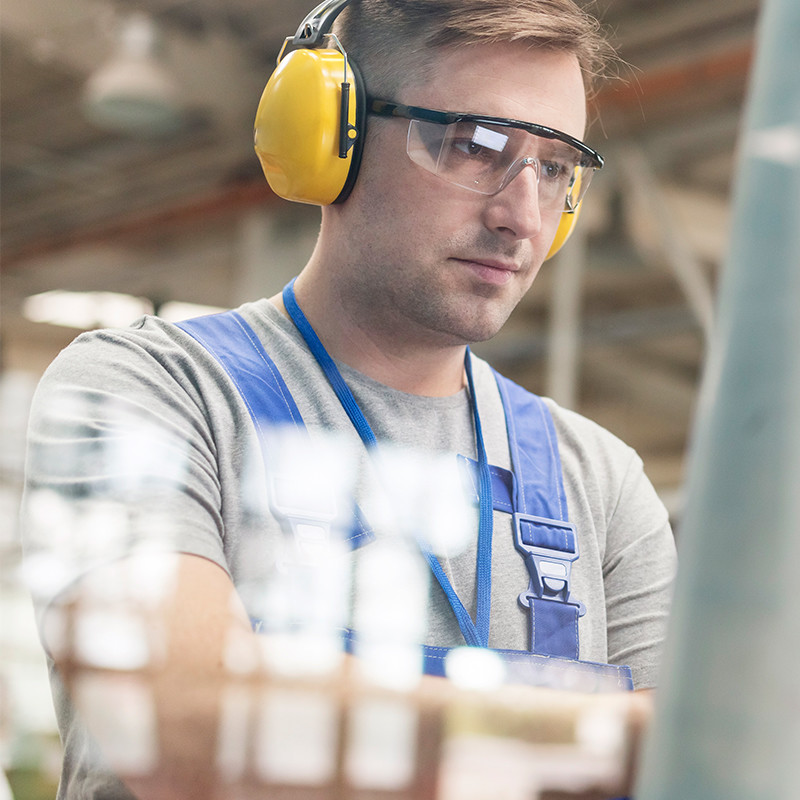
In 1933, Otto Röhm succeeded in developing a method for polymerising methyl methacrylate. He had originally intended to use it as a drying oil in varnishes, but soon realised that he could also use it as a coating for safety glass. In 1935, one of his research associates was experimenting with an acrylic polymer to see if it would bind two sheets of glass. Instead of acting as glue, it dried into a lightweight, clear plastic sheet. Otto immediately thought it could be used instead of glass.
It was another three years until Plexiglas® could be manufactured inexpensively, and ways to use it were discovered. Röhm himself experimented with various uses: he used Plexiglas® in his car windows and even his reading glasses! Among the many uses Röhm’s researchers explored were musical instruments. The most important applications of Plexiglas®, however, were not for transparent flutes but for airplanes.
Plexiglas® proved transparent, strong, and tough enough to be used in the cockpits of military aircraft. In 1940, Plexiglas® was used in the nose-cones of war planes, and three years later, acrylic aircraft canopies were being produced. In 1974, acrylic sheets stiffened with reinforced plastic were used for the first time in exterior body panels of a car. Today Plexiglas® is manufactured in forms ranging from clear to opaque; it is nearly unbreakable and is used in place of glass in airplanes, automobiles, light fixtures, aquariums, signs, and household appliances.
1930 Antifreeze and Cooling Agents
Antifreeze and cooling agents have the capacity to stay in liquid form below 0°C because they can retain energy, and thus not change their physical state.
Read moreThe main agents of antifreeze are either methanol, which was the most widely used agent until the late 1930s, ethylene glycol that became available in 1937 or propylene glycol, which is used as antifreeze where ethylene glycol would be inappropriate such as in food processing systems or in pipes in homes.
Antifreeze is added into car radiators to prevent freezing when it is very cold and also keep your car from overheating on very hot days. Originally, motorists drove cars without heaters or side windows, making winter driving very unpleasant. Also, it was extremely difficult to start a car in cold weather. The development of car heaters and side windows, and the improvement of engines and lubricants led to more winter driving and the requirement of antifreeze/coolant.
1933 Solvents
Have you ever wondered why paint flows? Or why the ink on a page of a magazine does not smudge? Or why you see through your car window?
Read more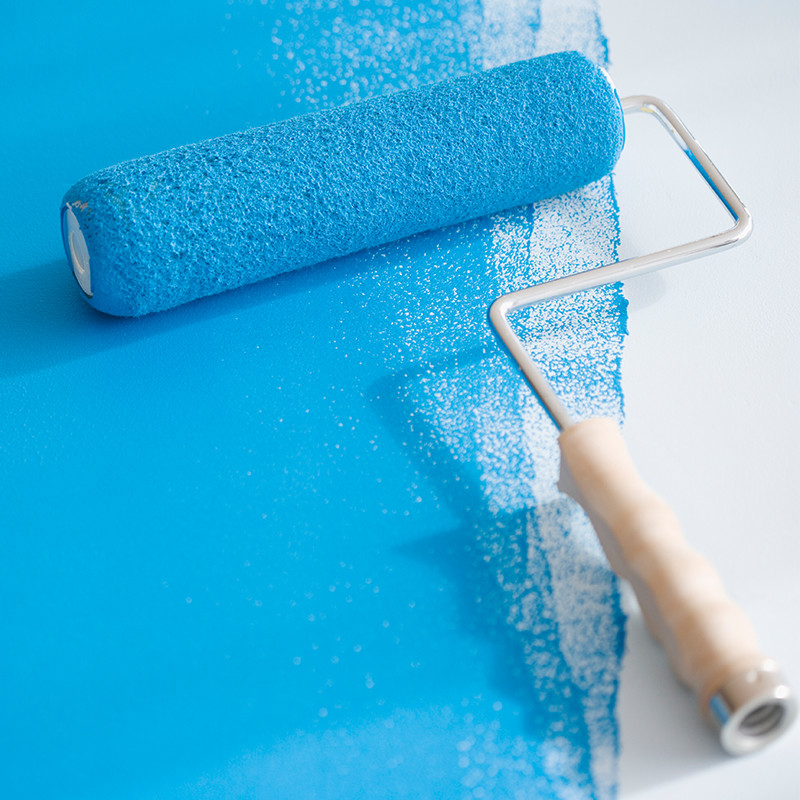
The answer is solvents: a liquid that dissolves, suspends or extracts other materials.
Solvents have been well known since the 1930s and have been in general use for nearly 50 years. They played a vital role in the World War II effort: as an ingredient for aviation fuel, in the production of parachutes and other nylon products, in the manufacturing of adhesives, and in the rubber industry.
There are many types of chemical solvents that are produced from oil refinery gases (known as naphtha). There are several types of solvents:
- oxygenated solvents
- hydrocarbon solvents
- chlorinated solvents
Oxygenated solvents are useful for many products, such as paints, pharmaceuticals, inks, cosmetics and detergents. Chlorinated solvents are used for dry cleaning and metal cleaning, in pharmaceuticals and electronics. Hydrocarbon solvents are used in ink for the printing industry, aluminium rolling, to make plastic foams for insulation in refrigerators and freezers.
1935 Polyethylene
In 1933, two organic chemists working for the UK’s Imperial Chemical Industries (ICI) Research Laboratory were testing chemicals under high pressure conditions.
Read more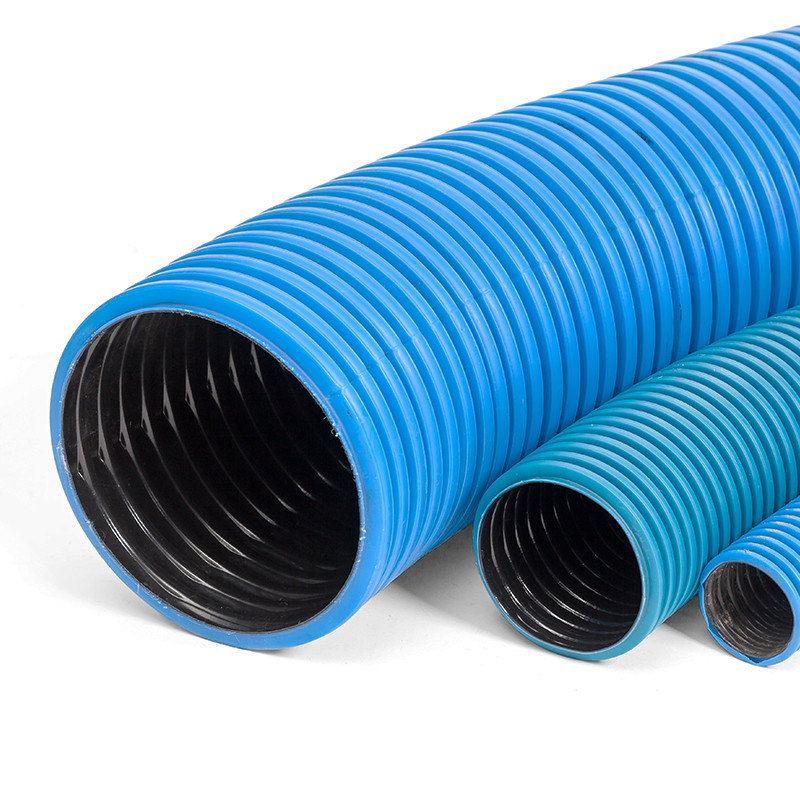
They produced a white waxy material. They tried to repeat the experiment, but couldn’t obtain the mystery substance. It was not until 1935 that another ICI chemist, Michael Perrin, worked out that the ICI chemists had oxygen in their apparatus by accident. Then he developed a reproducible high-pressure synthesis process for the white material, which we now know as polyethylene. This process became the basis for industrial low density polyethylene production, which started in 1939.
Polyethylene played a key supporting role during World War II – first as a coating for underwater cables and then as an insulating material for such vital military applications as radar insulation. This is because it was so light and thin that it made placing radar onto airplanes possible; something that could not be done using traditional insulating materials because they weighed too much.
It was not until after the war, though, that the material became a tremendous hit with consumers – and it keeps getting more popular. Polyethylene is produced in different grades (from very low density to high density) and its mechanical properties depend on how it’s produced. High Density polyethylene conquered its first mass market in the toy sector during the 1950s: it was the material used for Hula-Hoop rings.
Today, polyethylene is used to make such common items as sticky tape, soda bottles, milk jugs, dry-cleaning bags, pipes, water containers, etc.
1937 Nylon®
The American chemist, Wallace Hume Carothers, could never have known that he one day would be so popular with ladies.
Read more
His popularity with women literally hung by a silken thread: in 1935, he created a fibre which was as fine as silk, but stronger than cotton – nylon.
Nylon® was intended to be a synthetic replacement for silk for example in stockings, and also replaced animal hair in toothbrushes. The stockings were unveiled in 1939, to great public acclaim. On 15 May 1940, when nylon stockings first appeared on the American market, they created a sensation. In New York City alone, four million pairs were sold in just a few hours!
Nylon® was used in parachutes, ropes, flak vests, vehicle tyres, combat uniforms, and many other military applications after the United States entered World War II in 1941, making stockings hard to find until the war’s end. Nylon fibers are now used in fabrics, bridal veils, carpets, guitar strings, and ropes. Solid nylon is used for mechanical parts and in engineering.
1938 Polyurethane
When German chemist Otto Bayer was looking for new macromolecules during the 1930s he began to experiment with isocyanates. Some of his professional colleagues thought he was crazy!
Read more
In 1937, however, he won the skeptics over with his patent for a new and valuable product. Bayer had brought together isocyanates and polyols as baking additives. When the World War II broke out, the German authorities and the military started to look for new and better varieties of rubber. So, they investigated the properties of elastic polyurethane moulded plastic.
One of these tests went wrong, but the result inspired those involved and showed them the path that they should be following. Some of the moulded items came out full of bubbles, and the testing authority made the sarcastic comment: at least it would be useful for manufacturing fake Swiss cheese! Otto Bayer did not hesitate for long and wanted to find out all about this fake cheese. In subsequent tests, he discovered polyurethane foam.
In the war years of 1943 and 1944, polyurethane was used for propeller blades, landing flaps and skids for aircraft – but it was all top secret. During the post-war years, polyurethane became an unstoppable success. It was used for mattresses, furniture padding, and thermal insulation, and still is today. It is also used in paints and varnishes formulations and in adhesives, as well as for sports wear fabrics such as Lycra®.
1941 Teflon®
The discovery of Teflon® began with a loud bang. An American chemist, Roy Plunkett, was experimenting with tetrafluoroethylene gas in 1938 in a laboratory in New Jersey. Suddenly, there was a powerful explosion!
Read more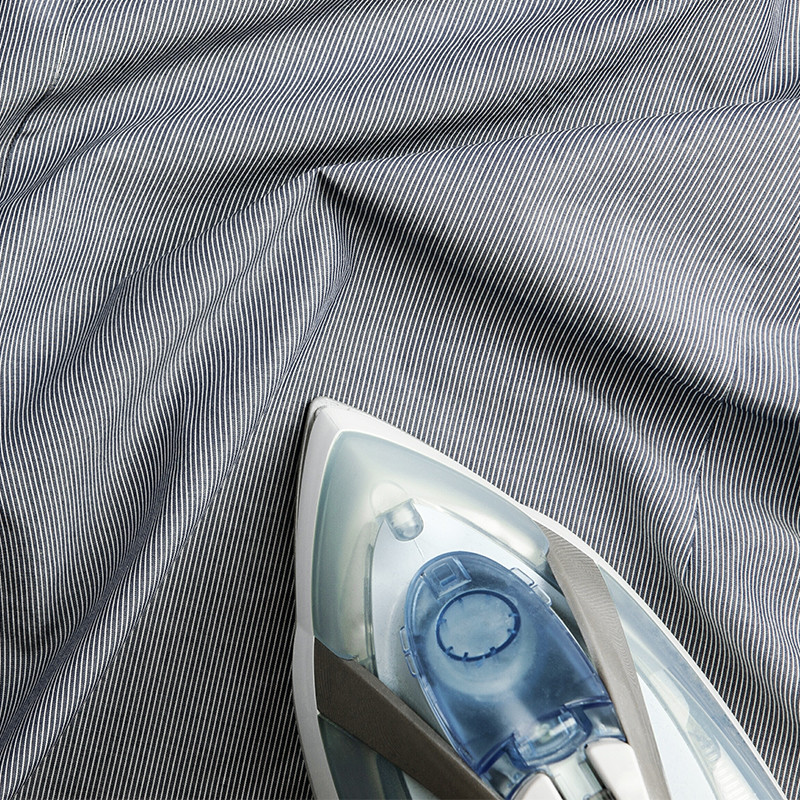
To the chemist’s astonishment he found that the remains of his apparatus contained a white, waxy powder. Closer investigation revealed that this was a polymer of tetrafluoroethylene, which has many remarkable characteristics.
The new plastic, which was soon given the name Teflon®, is unique because it is impervious to acids, cold and heat. Teflon® is now best-known for its slipperiness – which makes it useful for coating pots and pans for easy cooking and cleaning. This material has also found its way into a wide range of uses that go far beyond the frying pan; from chemical-proof pipes for industrial machinery, through medical injection tubes, and all the way to microelectronics. There is still no sign of the Teflon® boom coming to an end.
Gore-Tex®, which is a Teflon®-treated synthetic polymer, is an amazing, breathable, waterproof textile found in high-performance clothes such as walking boots and mountain coats. Unlike ordinary synthetic textiles like nylon, Gore-Tex® stops rain from getting in but lets perspiration out. So it keeps you dry on the outside and dry on the inside at the same time.
1946 Polyester
The polyester family was largely studied by American chemist Wallace Carothers, who discovered nylon.
Read more
When DuPont chose to concentrate on promising nylon research, Carothers’ work was resumed by two British chemists, John R. Whinfield and James T. Dickson. Along with some other inventors, in 1941 they created the first polyester fibre. It was formed from ethylene glycol and terephthalic acid. It was called Terylene and manufactured by Imperial Chemical Industries (ICI).
In 1946, DuPont bought all legal rights for the material and came up with the second polyester fibre which they named Dacron®. It was an inexpensive and durable fibre, so it soon invaded the textile market. It was advertised as a miracle fibre that could be worn for 68 days straight without ironing and it would still not wrinkle.
One of the best things about polyester is that it does not absorb water, so most of our outdoor gear is made of this material.
Polyethylene terephthalate is a member of the polyester family, which is used in shatter-proof bottles for drinks.
1951 Detergents
Synthetic detergent is a material which washes or cleans laundry, fabrics, dishes or kitchen utensils, as well as hard surfaces.
Read more
They can be of any form (e.g. liquid, powder, paste, bar, cake, moulded piece, shaped) and be used for household, institutional or industrial purposes.
It is not easy to pinpoint exactly when the detergent industry came into being. The first synthetic detergents seem to have been developed by the Germans in World War I due to the shortage of fats to make traditional soap. The breakthrough in the development of detergents came in 1946 when the first man-made detergent (containing a surfactant/builder combination) was introduced in the US.
A surfactant is a “Surface Active Agent” and it is the basic cleaning agent in the area of petrochemistry. Their primary role is to remove dirt. By lowering the surface tension of water, the cleaning solution can quickly “wet” the surface (dishes, fabrics, hard surfaces etc) so dirt and grime can be removed more easily.
1954 Polystyrene foam
From 1949, BASF chemist Fritz Stastny worked on a process to turn polystyrene into foam.
Read more
Two years later, when he had found the right raising agent and the correct mixture, his work met with success. The simple manufacturing process and the many possible applications soon turned the new foam into one of the most successful plastics. Although it is 98 percent air, Styron® is rugged and durable. It is primarily used as packaging and insulation. By enabling significant savings of fuel oil and gas, it has become one of the most important products for environmental technologies.
A spectacular application of Styron® was seen in 1964, when the freighter Al Kuweit which had sunk in Kuwait harbour was successfully lifted with the help of 2,500 cubic metres of Styron® which had been pumped into the hold. An attempt to file a patent for this process failed as Walt Disney already had the same idea in 1949: in a comic story, Donald Duck comes up with the idea of lifting a sunken ship using ping-pong balls!
1960 Polypropylene
After World War II, polyethylene led to the discovery of another material, polypropylene, in the early 1950s.
Read more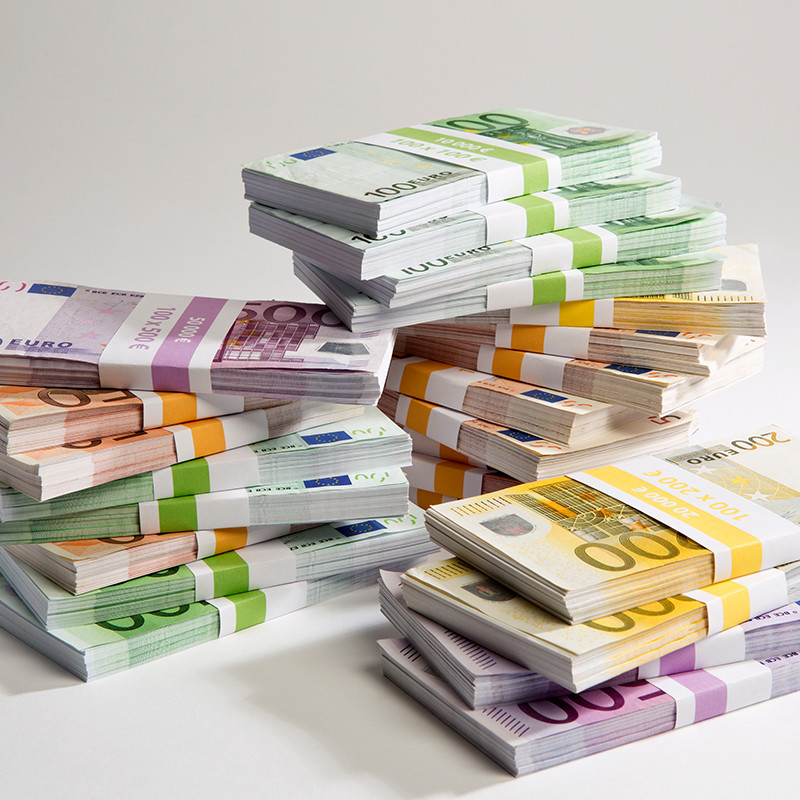
Often, similar inventions take place at the same time in many different places – due to sharing and exchange of knowledge. Polypropylene was an extreme case, with nine different teams claiming to have invented it! It was a patent attorney’s dream scenario, and litigation wasn’t resolved until 1989.
Polypropylene managed to survive the legal process, and two American chemists working for the Dutch company Phillips Petroleum, Paul Hogan and Robert Banks, are now generally credited as the “official” inventors of the material.
Polypropylene is similar to its ancestor, polyethylene, and shares polyethylene’s low cost, but is much more robust. It is used in a wide variety of applications, including food packaging, ropes, textiles, reusable containers of various types, loudspeakers, automotive components, and banknotes. Polypropylene resists the high temperatures needed for sterilisation and dish-washing, so it has many medical and household uses.
1960 Copolymer
A copolymer is a polymer derived from several mixed monomeric species. There are several types of copolymers with structural differences and offering improvement in the properties and performances of each ingredient.
Read more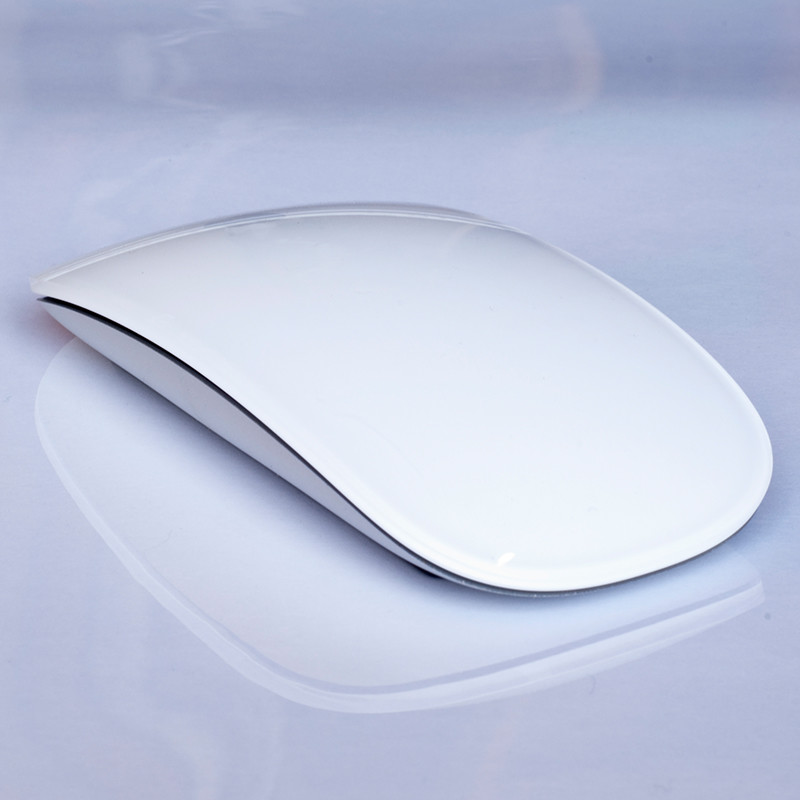
Copolymerisation methods have been developed since 50 years or so to fulfil the needs of many industries and areas of life. Commercially relevant copolymers include ABS plastics, SBR, Nitrile rubber, etc. just to name a few. Each ingredient is used in different proportions and provides specific properties to the end-product.
Let’s take ABS (Acrylonitrile butadiene styrene), which is a common example of a copolymer made by polymerising styrene and acrylonitrile in the presence of polybutadiene. The most important mechanical properties of ABS are resistance and toughness, but a variety of modifications can be made to improve specific properties such as impact and scratch resistance, brilliance and deepness of colours, long quality life. Because of the combination of its characteristics and processing properties, ABS offers infinite possibilities for industry and industrial design, IT equipment, small and large electrical appliances, packaging, medical devices, etc.
1965 Superabsorbent
Superabsorbent polymers are polymers that can absorb and retain extremely large amounts of water and aqueous solution relative to its own mass. They are prepared from acrylic acid and a crosslinker by solution or suspension polymerisation.
Read more
Until the 1980s water absorbing materials were cellulosic or fibre-based products. In the early 1960s some work was conducted in the USA on materials to improve water conservation in soil and they developed a resin that came into the form of a gel. These acrylic-based products were further developed into granular polymer and super absorbent fibers. Commercial production of superabsorbent began in Japan in 1978, but it is in 1980 that European countries developed the superabsorbent polymer for use in baby diapers. It revolutionised the diaper industry and diapers were designed to take advantage of the amazing liquid retention ability of the polymer.
Today superabsorbent material is widely used in personal care products to absorb fluids in 100 times their weight in water. Consumer applications include baby diapers, training pants, adult incontinence products and external feminine hygiene products. It is also used in medical applications such as therapy packs, surgical pads, medical waste solidification.
1970 Kevlar®
Stephanie Kwolek didn’t have enough money to study medicine, so she joined DuPont as a temporary employee, but the work turned out to be so interesting that she stayed on.
Read more
Relying on experience, instinct and great determination, she invented one of the modern world’s most readily recognised and widely used materials: Kevlar®.
Invented in 1965 as a result of research with high performance chemical compounds, Kevlar® was first used commercially in the early 1970s. It was meant to replace steel belts in vehicle tyres, as it is five times stronger than the same weight of steel, does not rust nor corrode, and is extremely lightweight. Further developments resulted in Kevlar® being used in bullet proof vests for police officers. Kevlar® can be used as-is, or in the construction of composite component.
Other applications of the compound include underwater cables, brake linings, space vehicles, boats, parachutes, skis, building materials, and more.
1977 PET bottles
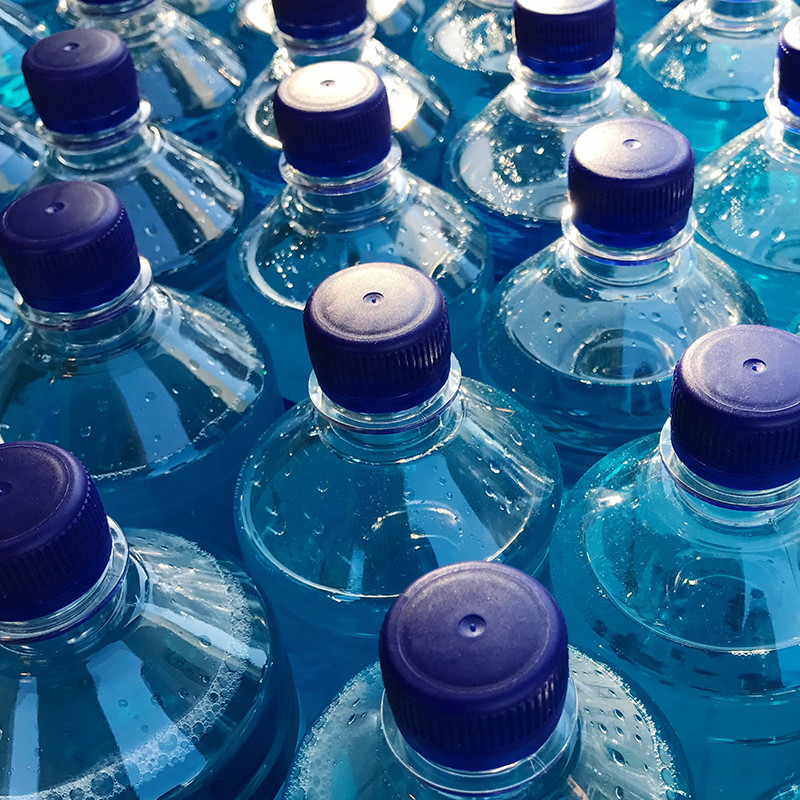
Derivatives of these two chemicals react together to produce PET resin. This was first developed in 1941 and originally used in synthetic fibres. It began to be used for packaging in the mid-1960s. In the early 1970s the technique for blowing bottles was developed commercially. This final product is a transparent, strong and lightweight bottle.
Throughout the years, the PET industry has developed alongside the environmental concerns and today it is fully recyclable. The first PET was recycled in 1977 and was turned into a bottle basecup, or the bottle-to-bottle process. Soon, however, this recovered PET material started to be used for making textile, carpets and non-woven.
PET bottles may contain soft drinks, juices, alchoholic drinks, water, edible oils, household cleaners, and other food and non-food applications.
1988 Liquid crystal polymer
The study of liquid crystals began in 1888, when Friedrich Reinitzer, an Austrian plant scientist observed that a material known as cholesteryl benzoate had two different melting points.
Read more
However, it was not until the last twenty years that this area of research experienced explosive growth, due to the successful applications of liquid crystals for flat-screen TVs and other electronic gadgets.
Reinitzer noticed that cholesteryl benzoate behaved very strangely. Instead of melting into a clear liquid, Reinitzer saw that cholesteryl benzoate melted at 145°C and became a milky, cloudy liquid. He heated it further, to 179°C, and it became transparent. None of the scientists involved could possibly have dreamed of the applications for this material. It was only in the early 1960s that a research group discovered that liquid crystals could be used for screens and displays.
Liquid crystals are now used in many areas of everyday life. They are used to make the flat screens of laptop computers but also increasingly for desktop PCs. The rapidly increasing mobile phone market uses liquid crystals to make mobile phone screens. Most people don’t realise how much chemical expertise has gone into making an ordinary mobile. Even the toy industry has benefited from liquid crystals, since without chemistry there could never have been a Tamagotchi boom (1996).
1988 Conducting polymers
Although research on conducting polymers started in Australia in 1963, the work was considered so important that the 2000 Nobel Prize in Chemistry was awarded to three of the leading researchers – Alan J. Heeger, Alan G. MacDiarmid and Hideki Shirakawa – for the discovery and development of conducting polymers.
Read more
The common belief was that plastics, unlike metals, do not conduct electricity. Yet the prize-winning researchers demonstrated that plastic can, under certain circumstances, behave like a metal. To become electrically conductive, polymers (i.e. plastics) must consist alternately of single and double bonds between the atoms. Electrons must be removed or introduced, creating extra electrons that can move along the molecule.
Conducting polymers are used for anti-static substances for photographic film, shields for computer screens and for “smart” windows (that can exclude sunlight). Semi-conductive polymers have recently been developed in light-emitting diodes (LEDs), solar cells and used as a display in mobile phones and small TV screens.
